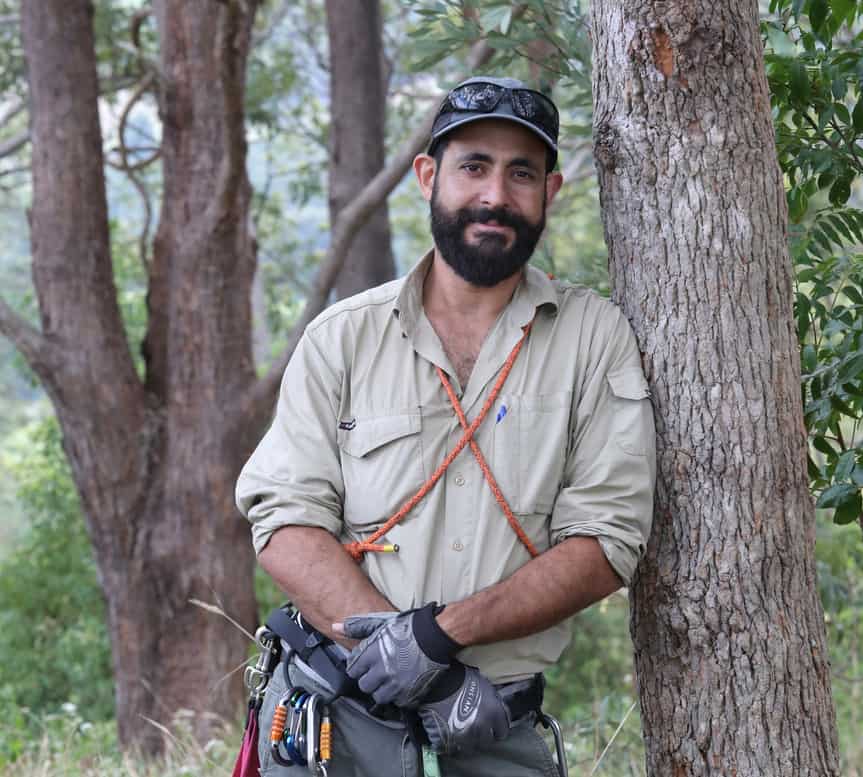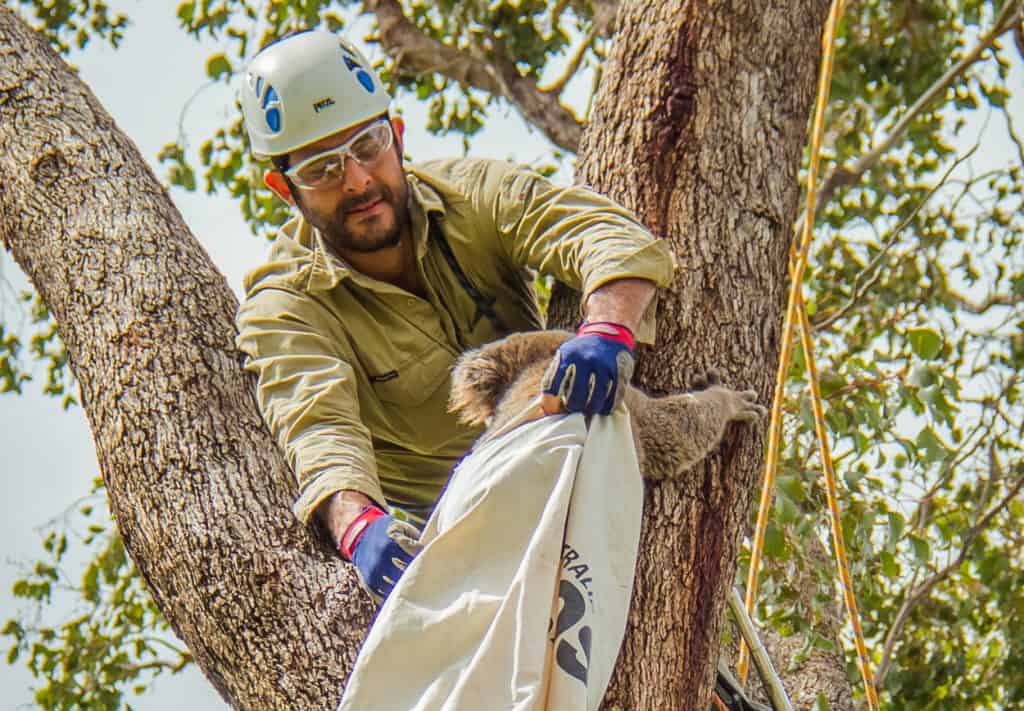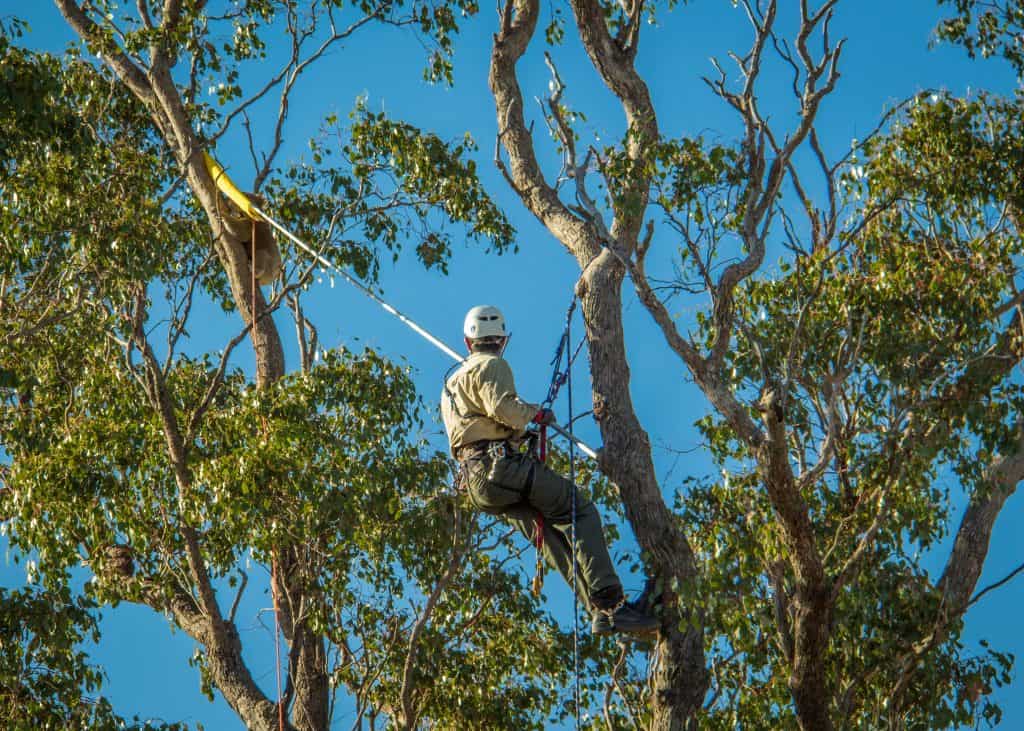George is a koala catcher. An experienced wildlife ecologist, George works on threatened species monitoring projects, helping researchers answer key questions to help secure these species in the wild.

'Koalas are faced with many threats, particularly through habitat loss and disease. They can also be really tricky to find in the wild. That’s where I come in.
I am a koala catcher. I climb into trees where I use an extendable pole with a flag attached at the end. When I shake the flag above a koala, they start climbing down to the ground where researchers can catch them. We can check the health of the koala, take some genetic material for analysis, or put a tracking collar on them before they are released again.
This kind of information can help us understand more about koalas, including their home range size, preference for different trees they use for food or shelter, and their disease status.
People picture koalas as sleepy balls of fur nestled in the fork of a tree. As a professional tree climber and koala catcher I see a very different side to them.
While some can be very calm and unconcerned with the presence of people, others can be highly mobile, leaping from branch to branch at dizzying heights.

Catching koalas requires patience and understanding of the animal’s behaviour while remaining calm.
Working at heights of up to 30 metres comes with its own challenges, but ultimately the koala’s welfare and safety is the most important part of the capture process.

One of the recent projects I worked on was the Southern Highlands Koala Conservation Project. It was great to be a part of rediscovering this significant koala population.
By improving our understanding of where koalas live and how they move through the landscape, we can help conserve them and their habitat. Koalas are critical as an umbrella species. This means that by protecting their habitat, we protect hundreds or even thousands of other native plants and animals sharing their home.'